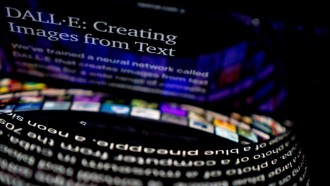A new study has revealed that ants are excellent navigators that keep a straight path and plot the sun's position in the sky and memorize their surroundings to guide their movements.
According to the study by an international team of researchers including those from the University of Edinburgh and the Research Centre on Animal Cognition in Paris, ants get their bearings right irrespective of the body's orientation and can find their way home under any condition.
Small But Powerful Brain
The study notes that ants may be having brains smaller than the head of a pin but their cognitive abilities are excellent in navigating their paths. The high point of the study was the assertion that ants use celestial cues. The study shows ants use several faculties of the brain simultaneously, indicating that the brain of insects is more complex than previously thought.
The findings were published in Current Biology.
From the point of view of body size, ants can claim bigger brains as they account for about 15 percent of the creature's total mass while that of human brains are a meager 2 percent compared to the body size.
The guidance from the sun that ants are drawing for their movements was reinforced in the study when mirrors were used to obscure the sun leading to the ants moving in the wrong direction. These showed celestial cues are being used by ants to maintain their bearing even if they are walking backward.
"Our main finding is that ants can decouple their direction of travel from their body orientation," said Antoine Wystrach of the University of Edinburgh.
"They can maintain a direction of travel, let's say north, independently of their current body orientation," Wystrach added.
Enigma Of Path
Hitherto, the perception was that ants memorized the scenery of their route that is projected on their retinas and works with a body-centered, or egocentric frame of reference.
But that hypothesis was not holding well in answering why ants can recognize their routes even while walking backward with no problem in finding their way to the nest.
To confirm whether ants indeed create a visual model independent of their body orientation, researchers studied Cataglyphis velox — an Andalusian desert ant known for its solo navigation skill.
The observations suggested that the ants register direction using an allocentric frame of reference that was external.
The new findings pointed to spatial orientation being decided by a web of information coming from several areas of the brain, adding a new perspective to the brain functioning of insects.
Methodology Of Study
In the study, researchers introduced a group of ants to a route that had a 90-degree turn in the path. After introducing the route, ants were given a cookie crumb light enough to carry. Those ants carrying the light crumb handled the turn easily unlike the others who were carrying larger crumbs. The latter moved backward to balance their weight, maintained their bearing than taking a turn. They also occasionally drop their food to observe the scenery around them.
These observations led to the conclusion that three types of memory are working on the ants — the memory of the route, memory of the new direction, and memory of the crumb that was left behind. All the time, the ants were moving in straight paths, even when they were walking forward, backward, or sideways.









